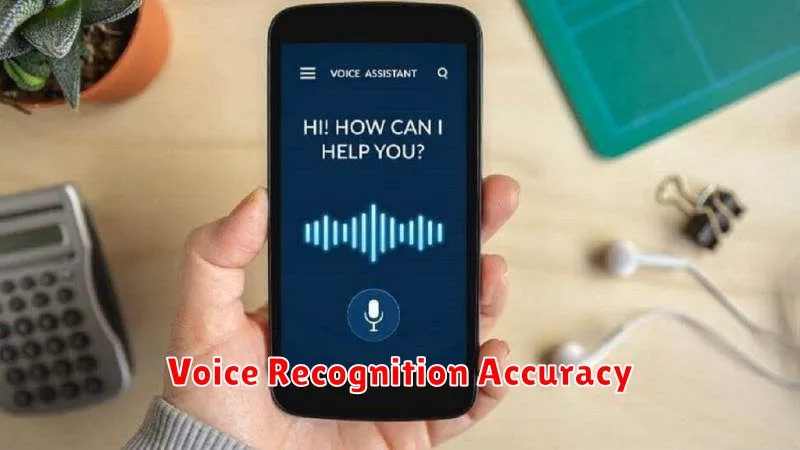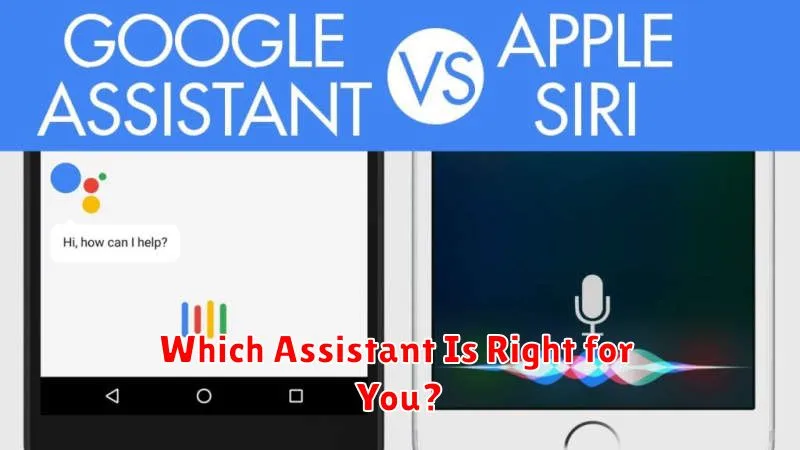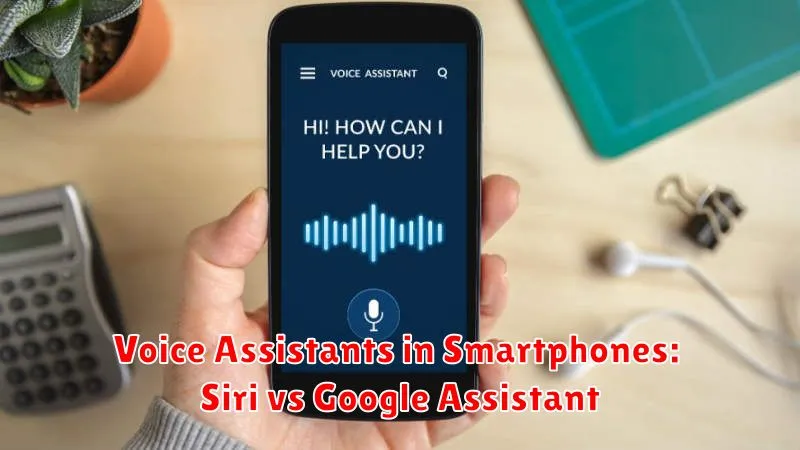In today’s fast-paced digital world, voice assistants have become an indispensable part of our lives, seamlessly integrating into our smartphones and offering unparalleled convenience. From setting reminders and sending messages to answering complex queries and controlling smart home devices, these intelligent virtual assistants, exemplified by industry giants like Siri and Google Assistant, have revolutionized the way we interact with our mobile devices. This article delves into a comprehensive comparison of two of the most prominent voice assistants available on smartphones: Apple’s Siri and Google’s Google Assistant. We will explore their functionalities, strengths, and weaknesses, providing valuable insights to help you determine which voice assistant best suits your needs.
The battle for supremacy between Siri and Google Assistant is a constantly evolving landscape. Both voice assistants boast an impressive array of features designed to simplify daily tasks and enhance user experience on smartphones. However, key differences exist in their capabilities, underlying technologies, and overall performance. This comparative analysis will examine their proficiency in various areas, including voice recognition accuracy, natural language processing, task completion, third-party app integration, and overall user experience. By examining these critical aspects, we aim to provide a clear and concise understanding of the strengths and weaknesses of both Siri and Google Assistant, empowering you to make an informed decision on which voice assistant reigns supreme in the realm of smartphones.
What Is a Voice Assistant?
A voice assistant is a software agent that can interpret human speech and perform tasks or provide information based on voice commands. These digital assistants leverage natural language processing (NLP) and artificial intelligence (AI) to understand, learn, and respond to user requests.
Using voice recognition, a voice assistant translates spoken words into text. This text is then analyzed to determine the user’s intent. Finally, the assistant performs the requested action or retrieves the requested information, often presented through synthesized speech.
Siri Features and Ecosystem
Siri, Apple’s voice assistant, offers a range of functionalities designed to integrate seamlessly within the Apple ecosystem. Voice commands facilitate tasks like sending messages, making calls, setting reminders, and playing music. Siri also provides proactive suggestions, such as suggesting apps to open based on user habits.
Integration with Apple devices is a key strength of Siri. It can control smart home devices through HomeKit, send messages through iMessage, and even make payments through Apple Pay. While primarily focused on Apple hardware and software, Siri’s tight integration within this ecosystem contributes to a streamlined user experience for Apple users.
Google Assistant Capabilities
Google Assistant stands out with its advanced natural language processing, allowing for more complex and conversational interactions. It excels at contextual awareness, remembering previous interactions to provide more relevant responses.
Key strengths include seamless integration with other Google services, providing access to a wealth of information. Its proactive assistance offers reminders, suggestions, and personalized information based on user habits and preferences.
Furthermore, Google Assistant boasts strong smart home device control and compatibility with a vast ecosystem of connected devices. It also offers real-time translation capabilities, making it a powerful tool for communication.
Voice Recognition Accuracy

A critical aspect of voice assistant performance is accuracy in speech recognition. Both Siri and Google Assistant have made significant strides in this area, boasting high accuracy rates in ideal conditions. However, performance can be affected by various factors.
Accents, background noise, and clarity of speech can all influence how well these assistants understand user requests. While both strive for continuous improvement, differences in their underlying technologies and training data can lead to variations in accuracy across different users and scenarios.
Integration with Smart Devices
A key differentiator between voice assistants lies in their smart device integration capabilities. Siri primarily focuses on Apple’s ecosystem, seamlessly controlling devices like HomePods, Apple TVs, and Macs. This tight integration allows for streamlined control within the Apple environment.
Google Assistant, on the other hand, boasts broader compatibility, extending its reach to a wider range of third-party smart devices including smart thermostats, lighting systems, and security cameras from various manufacturers. This offers greater flexibility for users with diverse smart home setups.
Languages and Localization
Language support is a crucial aspect of voice assistant functionality. Both Siri and Google Assistant support numerous languages, but their breadth and depth of support vary.
While both assistants handle common languages like English, Spanish, and French, Google Assistant generally boasts a wider range of supported languages. Localization goes beyond simple translation. It involves understanding the nuances of a language, including regional dialects, slang, and cultural context.
This impacts the assistant’s ability to accurately interpret commands and provide relevant responses. Google Assistant’s more extensive language database and sophisticated natural language processing models often give it an edge in localization, especially in less common languages and dialects.
Security and Privacy Concerns
While voice assistants offer convenience, they also raise security and privacy concerns. These digital assistants constantly listen for their wake words, raising questions about data collection and potential misuse.
Data breaches are a significant concern. Unauthorized access to voice data could expose personal information, conversations, and even location data. The storage and handling of this sensitive data must be carefully secured.
Furthermore, accidental activation can lead to unintended data collection and transmission. Privacy policies should be transparent, outlining the types of data collected, how it’s used, and with whom it’s shared. Users should be empowered to control their data and have the option to delete recordings.
Voice Commands for Daily Use
Voice assistants simplify everyday tasks with simple commands. Here are some common examples for daily use:
Communication: “Call Mom,” “Send a text to John,” “Read my unread messages.”
Scheduling & Reminders: “Set an alarm for 7 AM,” “Remind me to buy groceries at 5 PM,” “Schedule a meeting with the team tomorrow at 2 PM.”
Navigation & Search: “Get directions to the nearest coffee shop,” “What’s the weather like today?,” “Search for Italian restaurants near me.”
Entertainment & Media: “Play music by The Beatles,” “What’s playing on the radio?,” “Turn up the volume.”
Device Control: “Turn on Bluetooth,” “Turn off the lights,” “Open the camera app.”
Comparing Performance and Speed
When choosing a voice assistant, speed and performance are critical. Both Siri and Google Assistant aim for quick responses and efficient task completion. This section compares their performance based on factors like response time and accuracy.
Response Time: Generally, Google Assistant tends to provide faster responses, particularly for complex queries. Siri’s response times can vary, sometimes being quicker for basic commands.
Accuracy: Both assistants have high accuracy rates in understanding speech. However, Google Assistant often excels in comprehending nuanced or complex requests due to its vast knowledge base.
Which Assistant Is Right for You?

Choosing between Siri and Google Assistant depends on your priorities and ecosystem. Siri excels within the Apple ecosystem, offering seamless integration with Apple devices and services. It prioritizes privacy, processing requests on-device whenever possible.
Google Assistant shines in its knowledge base and integrations with third-party services. It provides more comprehensive answers and connects with a wider range of apps and smart home devices. If you prioritize functionality and cross-platform compatibility, Google Assistant may be a better fit.

